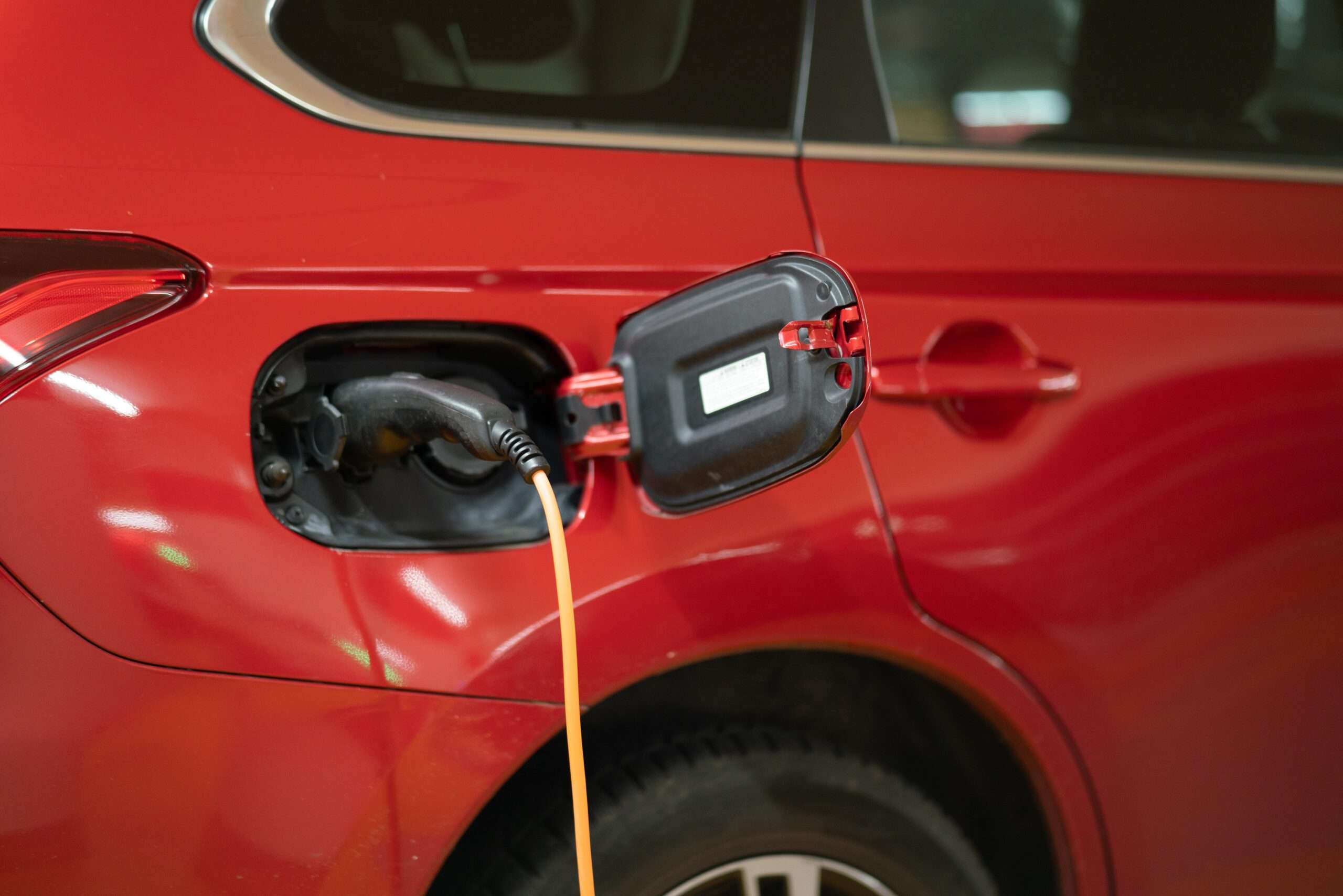In considering the merits of grounding shipping containers, a crucial aspect to examine is the burgeoning trend of off-grid living. With more and more individuals seeking alternative lifestyles and sustainable housing solutions, the question of whether or not to ground shipping containers has become a subject of debate. Grounding not only has implications for the structural integrity of the container but also impacts the ability of residents to harness various sources of renewable energy. By delving into the practical and theoretical aspects of this matter, one can gain a comprehensive understanding of the pros and cons underlying the grounding of shipping containers.

Importance of Grounding Shipping Containers
Grounding is a fundamental concept in electrical engineering that involves connecting electrical equipment or systems to the Earth’s surface. This connection serves to provide a safe pathway for electrical current to flow in the event of a fault or electrical surge. When it comes to shipping containers, grounding plays an essential role in ensuring the safety of both the container itself and its occupants. In this article, I will delve into the significance of grounding shipping containers, exploring various aspects such as electrical grounding, the impact on container structure, protection against lightning, electrical system safety, grounding systems for shipping containers, installation and compliance, maintenance and inspections, as well as cost and feasibility.
Electrical Grounding
Before delving into the importance of grounding shipping containers, it is essential to understand the concept of electrical grounding itself. Electrical grounding refers to the process of establishing an electrical connection between an electrical circuit or device and the Earth. This connection is typically made through a grounding electrode system, which consists of grounding conductors, such as metal rods, buried in the ground. The primary purpose of electrical grounding is to provide a low-resistance path for electrical current to flow in the event of a fault, such as a short circuit or ground fault. By diverting the current away from the equipment or structure and into the Earth, grounding helps prevent electrical shocks, fires, and equipment damage.
Role of Grounding in Electrical Systems
In electrical systems, grounding plays a vital role in maintaining electrical safety. When electrical equipment or devices are connected to the Earth through a properly designed grounding system, any faults that may occur, such as an insulation failure or a stray electrical current, can be quickly and safely redirected. Grounding ensures that excess electrical energy is dissipated, preventing dangerous voltage levels from building up and reducing the risk of electrical shock. Additionally, by providing a reference point for voltage measurements, grounding allows for accurate testing and troubleshooting in electrical systems.
Potential Risks of Improper Grounding
The consequences of improper grounding in electrical systems can be severe and pose significant risks to both people and property. Without a proper grounding system in place, there is a higher chance of electrical shock, equipment damage, and electrical fires. In the absence of an effective ground connection, electrical circuits and devices may experience voltage surges, which can overload and damage sensitive electronic components. Furthermore, without a reliable grounding system, there is an increased risk of electrical harmonics, electromagnetic interference, and power quality issues, which can impact the overall performance and efficiency of electrical systems.
Grounding Shipping Containers
Now that we have established the importance of grounding in electrical systems, let us turn our attention to the specific context of grounding shipping containers. Grounding a shipping container involves establishing a connection between the container and the Earth’s surface to ensure the safe dissipation of electrical energy. This grounding connection is particularly crucial for shipping containers because they often act as enclosed metal structures that can be susceptible to electrical and safety hazards.
Benefits of Grounding Shipping Containers
Grounding shipping containers offers numerous benefits that contribute to ensuring the safety of the container and its occupants. Firstly, grounding provides protection against electrical faults and potential electrical surges that could occur within the container. By establishing a low-resistance pathway to the Earth, any fault currents will be diverted away from the container structure, reducing the risk of electrical shock and minimizing damage to the container’s electrical systems and equipment.
Secondly, grounding is vital for the effective functioning of electrical surge protection devices. These devices are commonly used to limit the voltage surges that can occur during lightning strikes or power surges. By connecting the shipping container to the Earth through a grounding system, the surge protection devices can direct any excess voltage safely to the ground, protecting the container and its contents from potential damage.
Finally, grounding helps mitigate the risk of static electricity buildup within the container. When containers are subject to friction or movement, particularly during loading and unloading processes, static charges can accumulate. If not properly grounded, these static charges can discharge suddenly and pose a significant safety hazard to personnel and equipment within the container.
Types of Grounding Systems for Shipping Containers
Several types of grounding systems can be implemented for shipping containers, depending on factors such as location, soil conditions, and specific requirements. The most common grounding systems for shipping containers include soil-based grounding systems, concrete-based grounding systems, and grounding systems specifically designed for maritime environments.
Soil-based grounding systems involve the installation of grounding electrodes, such as metal rods, into the ground near the container. These electrodes are buried to a specified depth and connected to the container through grounding conductors. The soil surrounding the electrodes acts as the conductor, allowing for the dissipation of electrical energy into the Earth.
Concrete-based grounding systems, on the other hand, utilize the conductivity of concrete to establish an effective grounding connection. This type of grounding system involves embedding metal plates or metal strips in the concrete foundation of the container. These metal elements serve as the grounding conductors, providing a direct path to the Earth for electrical current.
For shipping containers located in maritime environments, specialized grounding systems are often utilized. These systems account for the corrosive nature of saltwater and the unique challenges posed by the marine environment. Typically, grounding components are constructed using materials resistant to corrosion, such as stainless steel, and additional measures are taken to protect against the corrosive effects of saltwater.
How Grounding Impacts the Container’s Structure
While grounding is essential for ensuring electrical safety, it is crucial to consider how this process affects the structure of the shipping container itself. One potential concern is the impact of grounding on the container’s structural integrity, as the grounding system involves making electrical connections to the container’s metal structure.
Potential Corrosion Issues
One of the main considerations regarding the impact of grounding on a shipping container’s structure is the potential for corrosion. When metal components of the grounding system come into contact with the container’s structure, galvanic corrosion can occur. Galvanic corrosion results from the electrochemical reaction between two dissimilar metals in the presence of an electrolyte, such as moisture. Over time, this corrosion can weaken the container’s metal walls or cause localized damage.
To minimize the risk of corrosion, it is crucial to select grounding components made from materials that are compatible with the container’s structure and the surrounding environment. Additionally, coatings, such as paint or corrosion-resistant films, can be applied to the grounding components to provide an extra layer of protection against moisture and corrosive agents.
Long-Term Structural Integrity
Another aspect to consider is the long-term impact of grounding on the structural integrity of the container. Grounding systems that involve installing metal components, such as bolts or plates, into the container’s walls or floor may compromise its structural strength if not designed and implemented correctly. These penetrations can create points of weakness or stress concentrations that may affect the container’s ability to withstand external loads, such as stacking or transportation forces.
To ensure the long-term structural integrity of the container, proper design and installation techniques should be followed. This may involve consulting with structural engineering professionals who can assess the container’s load-bearing capacity and design a grounding system that minimally impacts its structural integrity.
Protection Against Lightning
An important consideration when grounding shipping containers is the protection they offer against lightning strikes. Lightning is a powerful natural phenomenon that poses a significant risk to structures, including shipping containers, due to its potential to cause fires, equipment damage, and even structural collapse. Grounding plays a crucial role in mitigating these risks and providing a safe pathway for lightning-induced currents.
Methods of Lightning Protection
In the context of shipping containers, lightning protection involves two primary components: the lightning rod system and the grounding system. The lightning rod system involves the installation of lightning rods or air terminals on top of the container. These rods act as the preferred point of lightning strike, guiding the electrical discharge safely down to the grounding system.
The grounding system, in turn, provides a low-resistance pathway for the lightning-induced current to flow into the Earth. This system typically consists of grounding conductors, such as metal rods or cables, that are connected to the lightning rods and buried in the ground. By effectively dissipating the electrical energy from the lightning strike, the grounding system helps protect the shipping container from potential damage.
Considerations for Specific Locations
When it comes to grounding shipping containers for lightning protection, it is important to consider the specific location and environmental conditions. Lightning activity and the associated risks can vary significantly depending on the region. Areas prone to frequent thunderstorms or located in high-risk lightning zones may require more robust grounding systems and additional lightning protection measures. It is crucial to consult local lightning protection standards and regulations to ensure proper grounding and protection against lightning strikes.
Electrical System Safety
Beyond the structural and lightning protection aspects, grounding shipping containers is essential for maintaining electrical system safety within the container. Shipping containers often have electrical systems installed to provide power for lighting, heating, ventilation, and other equipment. Proper grounding of these electrical systems is crucial for preventing electrical accidents and ensuring safe usage of electrical equipment.

Preventing Electrical Accidents
The presence of electrical systems in shipping containers introduces the potential for various electrical accidents, such as electrical shocks, short circuits, and electrical fires. Grounding plays a significant role in preventing these accidents by redirecting fault currents, limiting voltage surges, and providing a safe pathway for electrical energy.
By effectively grounding the electrical systems, any faults that may occur, such as a short circuit or ground fault, can be safely managed. Grounding allows the fault current to flow directly to the Earth, preventing it from passing through equipment or causing harm to personnel. This reduces the risk of electrical shock and minimizes the potential for electrical fires or equipment damage.
Ensuring Safe Usage of Electrical Equipment
Grounding shipping containers is also crucial for ensuring the safe usage of electrical equipment within the container. Many containers are repurposed for various applications, such as offices, workshops, or living spaces, and may contain a range of electrical devices or appliances. Proper grounding ensures that these devices function correctly and safely, without posing a risk to the occupants or the container itself.
By establishing an effective grounding connection, electrical equipment within the container can operate with the expected level of electrical safety. Grounding helps stabilize voltage levels, minimize electrical noise, and mitigate the risk of electric shock when using or servicing the equipment. It also provides a reference point for reliable and accurate grounding measurements, enabling proper maintenance and troubleshooting of the electrical systems within the container.
Complying with Electrical Regulations
Grounding shipping containers is not only important for safety reasons but also for compliance with local electrical codes and standards. Electrical regulations vary from country to country, and failure to meet these requirements can result in legal and liability issues.
When grounding a shipping container, it is essential to consult the relevant electrical codes and standards governing the specific location. These codes typically outline the minimum requirements for grounding systems, including the type and installation of grounding components, grounding electrode sizing, and testing procedures. Compliance with these regulations ensures that the grounding system meets the necessary safety standards and reduces the likelihood of electrical accidents or non-compliance penalties.
Grounding Systems for Shipping Containers
As mentioned earlier, several grounding systems can be employed for shipping containers, depending on the specific requirements and environmental conditions. The choice of grounding system depends on factors such as soil composition, resistivity, foundation type, and local regulations. The most common grounding systems for shipping containers include soil-based grounding systems, concrete-based grounding systems, and grounding systems specifically designed for maritime environments.
Soil-Based Grounding Systems
Soil-based grounding systems are one of the most widely used options for grounding shipping containers. These systems utilize the conductivity of the surrounding soil to establish an effective grounding connection. The system typically involves the installation of metal grounding electrodes, such as copper or galvanized steel rods, into the ground near the container. These electrodes are buried to a specified depth, providing a reliable pathway for electrical energy to flow into the Earth.
To optimize the performance of soil-based grounding systems, it is crucial to consider factors such as soil resistivity, moisture content, and electrode spacing. Soil resistivity, in particular, plays a significant role in determining the effectiveness of the grounding system. Higher resistivity soils may require additional grounding electrodes to achieve the desired low-resistance path to the Earth.
Concrete-Based Grounding Systems
Concrete-based grounding systems offer an alternative approach to grounding shipping containers, especially in cases where soil conditions are unfavorable or unreliable. These systems utilize the conductivity of concrete to establish a grounding connection. In this type of system, metal plates or metal strips are embedded in the concrete foundation of the container during construction. These metal elements serve as the grounding conductors, providing a direct and reliable path for electrical current to flow into the Earth.
To ensure the effectiveness of concrete-based grounding systems, it is crucial to use metal elements with adequate conductivity and compatibility with concrete. Proper grounding conductor sizing and layout are essential to minimize the resistance and ensure uniform grounding across the container structure. Additionally, proper bonding between the metal components and the concrete foundation should be established to prevent potential separation or degradation over time.
Grounding Systems for Maritime Environments
Shipping containers located in maritime environments, such as ports or coastal areas, require specific grounding systems that can withstand the corrosive effects of saltwater. Maritime environments pose unique challenges due to the increased risk of corrosion, which can compromise the effectiveness and longevity of grounding systems.
Grounding systems designed for maritime environments often involve the use of corrosion-resistant materials and additional protective measures. Stainless steel grounding components, for example, are commonly utilized to minimize the risk of corrosion. Coatings, such as paint or corrosion-resistant films, can also be applied to the grounding components to provide an extra layer of protection against saltwater and other corrosive agents.

Installation and Compliance
Proper installation techniques are crucial for ensuring the effectiveness and reliability of grounding systems for shipping containers. The installation process should be carried out by qualified personnel with a thorough understanding of electrical grounding principles and the specific requirements of shipping containers.
Proper Installation Techniques
During the installation of a grounding system, it is essential to follow industry best practices and guidelines. These include ensuring proper bonding between grounding components, maintaining adequate separation distances, and using appropriate connectors, clamps, and fasteners. The integrity of connections and the continuity of the grounding system should be regularly tested and verified to ensure proper functioning.
Additionally, installation should take into account factors such as container placement, local soil conditions, and proximity to other structures or utilities. Properly designed grounding systems consider the specific location and any potential interference or neighboring electrical systems that could impact the effectiveness of the grounding.
Considerations for Grounding Retrofitting
In some cases, existing shipping containers may require retrofitting to establish a proper grounding system. Retrofitting poses its own set of challenges, as it involves modifying an already built structure to accommodate the grounding components. When considering grounding retrofitting, it is crucial to assess the structural integrity of the container and ensure that any modifications do not compromise its strength or functionality. Consulting with structural engineers and electrical experts can help develop appropriate retrofitting strategies that meet the required grounding standards.
Compliance with Local Electrical Codes and Standards
Compliance with local electrical codes and standards is of utmost importance when grounding shipping containers. Different regions and countries have specific regulations governing electrical installations, including grounding requirements. It is essential to familiarize oneself with these regulations and ensure that the grounding system adheres to the prescribed guidelines.
Compliance with electrical codes and standards helps ensure the safety and reliability of the grounding system. It also minimizes the risk of non-compliance penalties and potential liability issues.
Maintenance and Inspections
Maintaining proper grounding is an ongoing process that requires regular inspections, testing, and maintenance. Adequate maintenance practices are crucial for preserving the integrity and reliability of the grounding system over time.
Regular Maintenance Practices
Regular maintenance practices for grounding systems involve visually inspecting grounding components for signs of corrosion, damage, or loose connections. Coatings or protective coverings should be checked for wear or degradation, and repairs or replacements should be promptly undertaken when necessary. Grounding electrodes, such as metal rods, should be periodically tested to ensure their resistance values remain within acceptable limits.
Regular cleaning of grounding components can also help prevent corrosion and ensure proper conductivity. Excess dirt, debris, or vegetation around grounding electrodes should be removed, and any signs of soil erosion or moisture accumulation addressed promptly.
Inspecting Grounding Systems
In addition to maintenance practices, periodic inspections and testing of the grounding system are essential to identify any potential issues or changes that could affect its performance. Grounding system inspections should include evaluating the continuity of grounding conductors, measuring the resistance or impedance of grounding electrodes, and verifying the integrity of connections and bonding.
Inspections should also take into account any changes in the container’s electrical systems or modifications to the grounding system. When alterations are made to the container or electrical equipment, it is crucial to assess their impact on the grounding and verify that the system remains compliant with local codes and standards.
Repairing and Replacing Faulty Grounding Components
If during inspections or maintenance activities, it is identified that grounding components are faulty or not performing as intended, appropriate repairs or replacements should be carried out promptly. Faulty grounding components can significantly compromise the performance of the grounding system, potentially leading to increased safety risks or non-compliance with electrical standards.
When repairing or replacing grounding components, it is vital to utilize materials and methods that are compatible with the existing system and meet the required electrical specifications. The repair or replacement process should be carried out in accordance with industry best practices and should not introduce any unintended defects or weaknesses into the grounding system.
Cost and Feasibility
Like any electrical system component, the grounding of shipping containers incurs costs, which can vary depending on various factors such as container size, the complexity of the grounding system, and specific location requirements.
Expense of Grounding Shipping Containers
The cost of grounding shipping containers encompasses several factors, including the materials and labor required for the grounding system installation, testing, and any necessary modifications or retrofits. Additionally, the cost may vary based on factors such as soil conditions, corrosion considerations, and compliance with local electrical codes and standards.
While the initial cost of grounding shipping containers may increase the overall project expenses, it is important to view it as an essential investment in safety and compliance. The costs associated with failing to ground shipping containers adequately can be far more significant, including potential damage to the container, electrical equipment, or injuries to occupants.
Economic Benefits of Grounding
Beyond the critical safety considerations, grounding shipping containers can also provide economic benefits in the long run. By ensuring the proper functioning of electrical systems within the container, grounding helps prevent equipment damage, electrical accidents, and potential downtime due to electrical faults. These factors contribute to improved efficiency and productivity, reduced maintenance and repair costs, and prolonged equipment lifespan.
Proper grounding can also help avoid costly legal penalties and liability issues resulting from non-compliance with electrical codes and standards. By adhering to the prescribed grounding requirements, shipping container owners or operators can mitigate potential legal risks and maintain a positive reputation within their industry.
Feasibility for Different Container Uses
The feasibility of grounding shipping containers depends on their intended use and specific requirements. While grounding is generally recommended for all shipping containers that house electrical systems or are used in locations prone to lightning strikes, the level of grounding needed may vary.
For example, shipping containers being used as simple storage units with minimal electrical systems may require a basic grounding system to meet safety requirements. On the other hand, shipping containers repurposed as offices, workshops, or living spaces may necessitate more comprehensive grounding systems that comply with both electrical and occupational safety regulations.
When considering the feasibility of grounding shipping containers for a particular purpose, it is crucial to consult relevant electrical and safety professionals who can assess the specific requirements and provide guidance on the appropriate grounding solution.
Conclusion
In conclusion, grounding shipping containers is of significant importance to ensure electrical safety, structural integrity, and protection against lightning. By establishing a proper grounding system, the risk of electrical accidents, equipment damage, and fires can be significantly reduced, safeguarding both the container and its occupants. Proper grounding also ensures compliance with local electrical codes and standards, minimizing legal risks and liability issues. While there are costs associated with grounding shipping containers, the long-term benefits in terms of safety, efficiency, and compliance make it a worthwhile investment. Ultimately, grounding shipping containers should be regarded as a fundamental aspect of their electrical infrastructure, contributing to the overall safety and functionality of these versatile structures.




